Today I’d like to welcome my friend Jamie as a guest poster on the site. She is a goddess when it comes to home-canning vegetable beef soup. So read on to find out how you can do this at home.
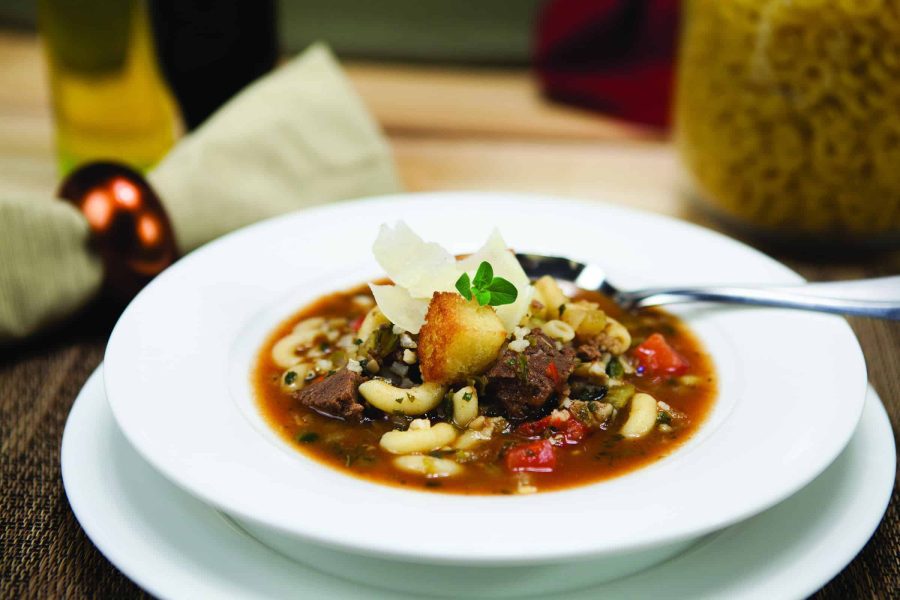
Pressure Canning Vegetable Beef Soup Recipe
There is nothing quite like a hot bowl of homemade soup on a cold and windy day. But if you are like me, sometimes you want the food but maybe not all the mess, or you don’t have the time at that moment.
Therefore, if you learn the process of canning vegetable beef soup, you only have the mess once, but can enjoy the soup over and over again!
Home made canned vegetable beef soup is one of my favorites!
It is also a perfect soup to make at the end of the season when the last of the vegetables are finished. Therefore, this post isn’t a typical recipe. It’s more of a guideline to allow you to use your personal recipe.
Even though this soup has to be pressure canned, it is still relatively easy to make and can.
For using your specific pressure canner, read the instructions that came with it. It will require you to put a few quarts in your canner to start, add your jars with lids, properly attach the cover, let the steam release, let the pressure build, cook for the allotted time and then cool down.
If you don’t have a pressure canner yet, I highly recommend the All American Pressure Canner.
Another good option, but less expensive is the Presto Pressure Canner.
1.Gather and Prep Your Ingredients
This is the fun part in my opinion. I love looking for and buying fresh produce or picking it from the garden. There is just something rewarding about having a counter full of fresh ingredients instead of all the processed store boxes and cans. So, for this soup, I use carrots, potatoes, corn, green beans, peas, onions, celery, bell peppers, and beef (whatever is cheapest). Don’t worry, even the toughest harshest cuts of meat will turn out tender once the canning process is complete.
Next, wash all your vegetables and cut them into the size you prefer for your soup. I like everything cut into 1/4″-1/2″ cubes/dice. I also leave the skin on the potatoes when I use baby reds. However, here is a part where your preferences really matter. Don’t go my way if you do not like it or have a better idea!
If you don’t want all the trouble of washing/peeling/ chopping fresh veggies, you can always use freeze-dried veggies. They have all the same nutrients as fresh garden produce but don’t require any prep time and they work well in canning!
Cooking The Vegetable Beef Soup for Pressure Canning
Now that you have your preferred ingredients ready, it is time to start cooking.
- In a large stockpot or pressure cooker and a little oil and beef stew meat
- Add your favorite seasonings – I use pepper, minced garlic, onion powder, and a bit of salt
- Once the meat is browned add the stock/broth and vegetables
- Add more seasoning to taste
- Let simmer until vegetables start to tender
You don’t want to cook the soup too long in the pot because it will cook more during the canning process and you don’t want everything to become mush.
Flavor burst idea: I use boiling water, tomato powder, and beef bouillon as my broth. It gives the soup a nice deep flavor.
Pressure Canning Vegetable Beef Soup
Now that the soup is done, you are ready to fill your hot, prepared jars.
I like to put my soup in wide-mouth pint jars so that they are single-serving size. So, fill your jars making sure to keep 1″ of headspace. In addition, make sure you remove any air bubbles.
Make sure you are giving your jars a water bath.
Water-bath canning is very important because it ensures safe storage at room temperature for up to a year. Also, canned foods that are stored in a freezer typically last for 3 to 5 years.
For an easy guide to water-bath canning, read the article from EatingWell about 10 Steps to Water-Bath Canning. They show us how processing preserves in a boiling water bath ensures safe storage at room temperature for up to a year.
Now you are ready for the pressure canning.
Place your jars into your canner, following your canner’s instructions. In my large canner, I can fit 16 pints (8 per layer) with a separator between layers.
Adjust your canner lid, bring up to pressure, and process pints for 1 hour and 15 minutes for pints at 10 pounds of pressure (1 hour and 30 minutes for quarts).
Let cool before removing the jars.
Finally, enjoy your home-canned vegetable beef soup! As you already saw, canning vegetable beef soup is easy using the pressure canning method!
Last but not least, please keep in mind that I aspect all your further questions in the comment section below. Do not hesitate to ask anything and share all your sincere thoughts on this recipe.
Becky is a wildlife enthusiast and pet and livestock care expert with a diploma in canine nutrition. With over a decade of experience in animal welfare, Becky lends her expertise to Simple Family Preparedness through insightful info about pets, livestock, bee keeping, and the practicalities of homesteading.

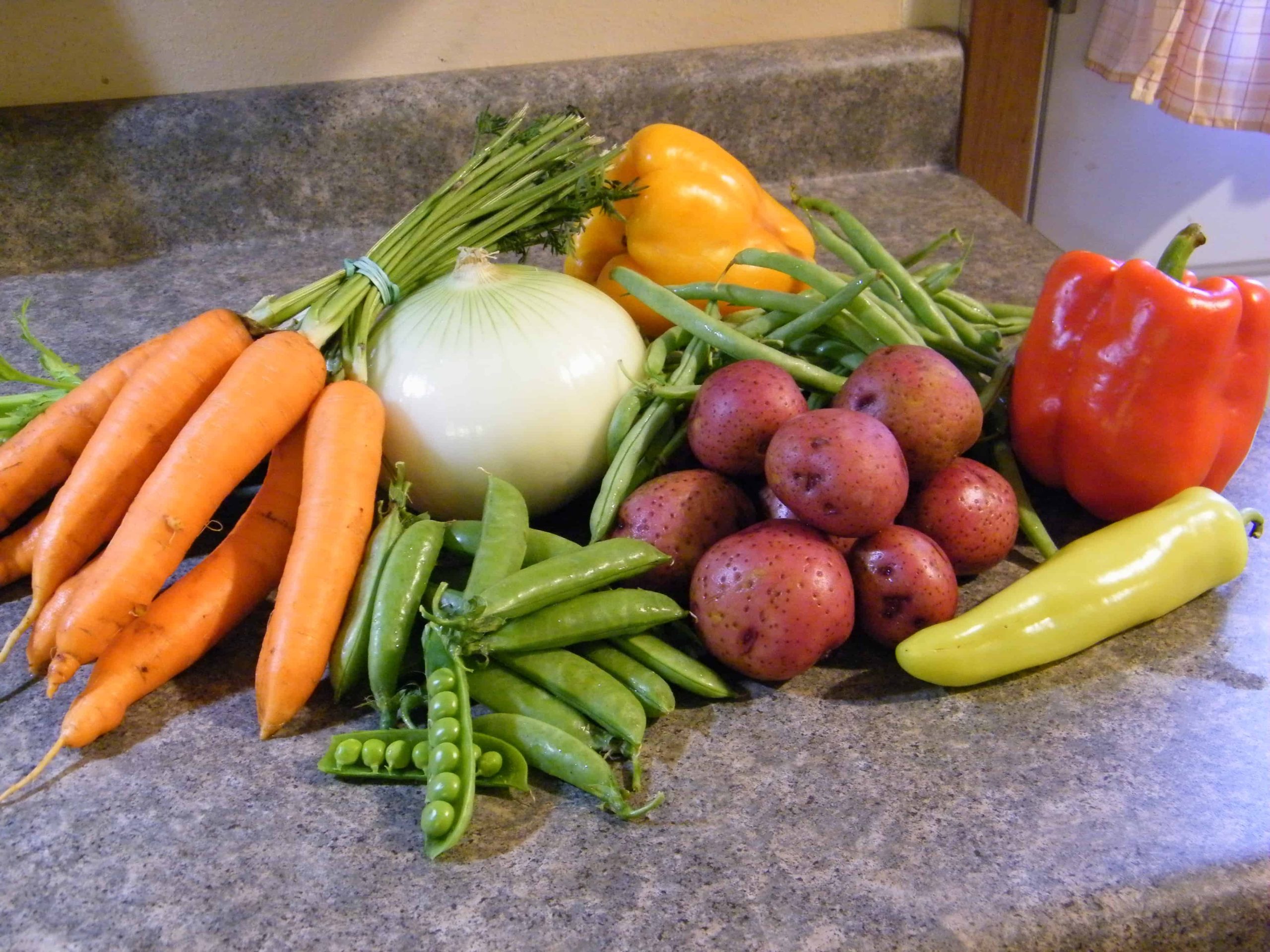
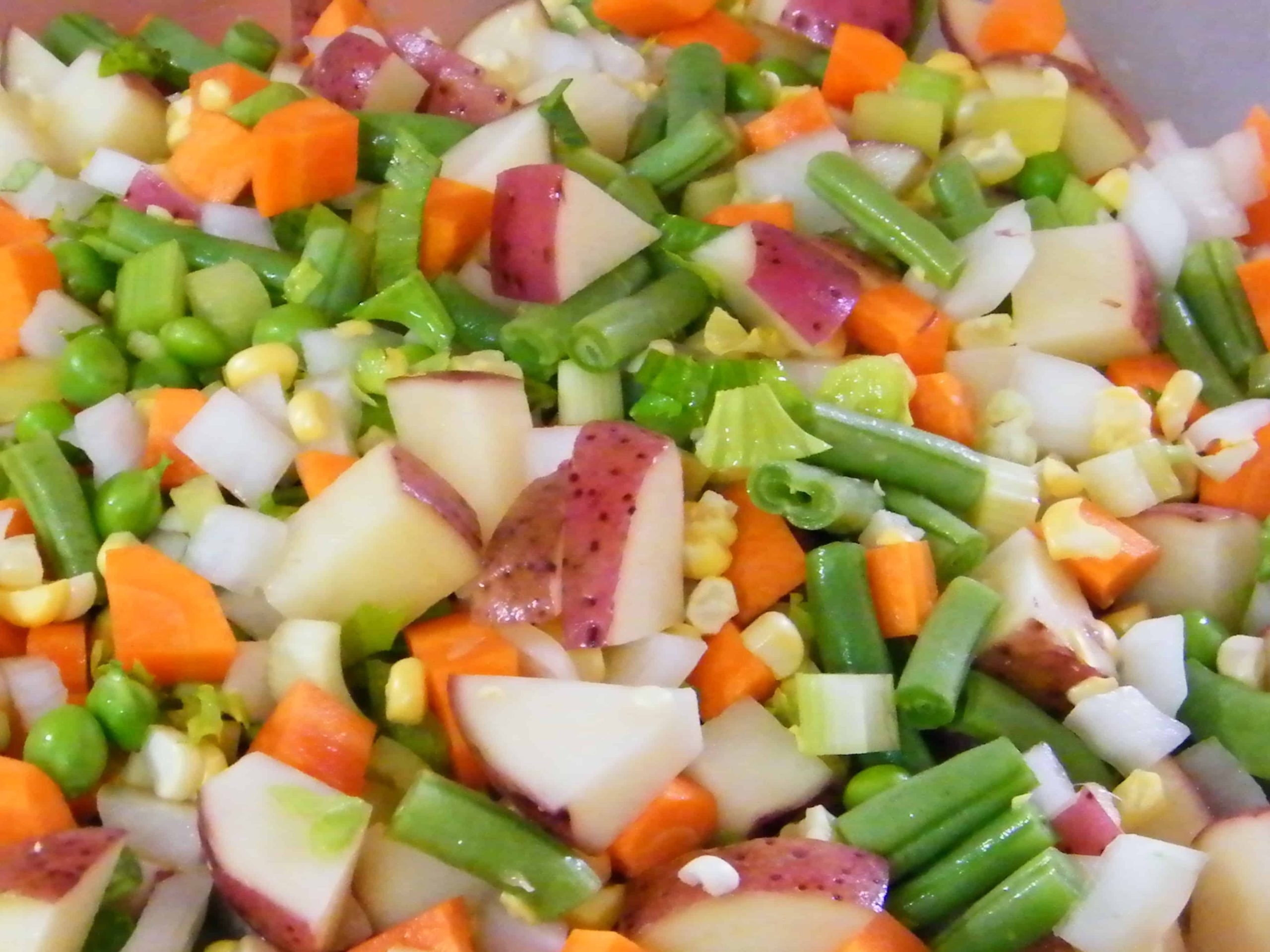
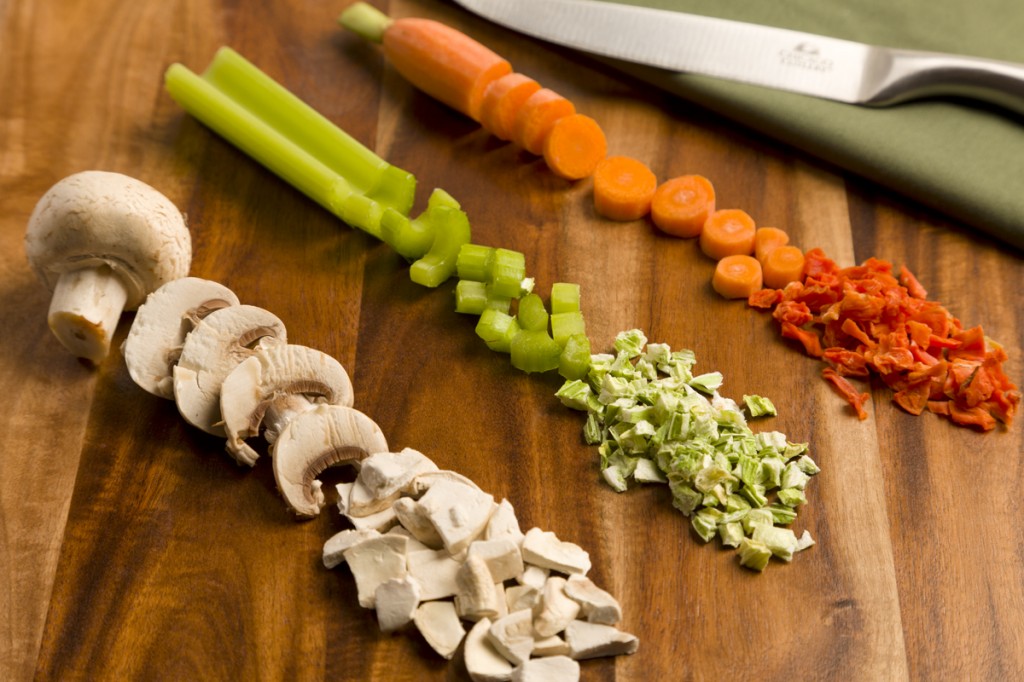
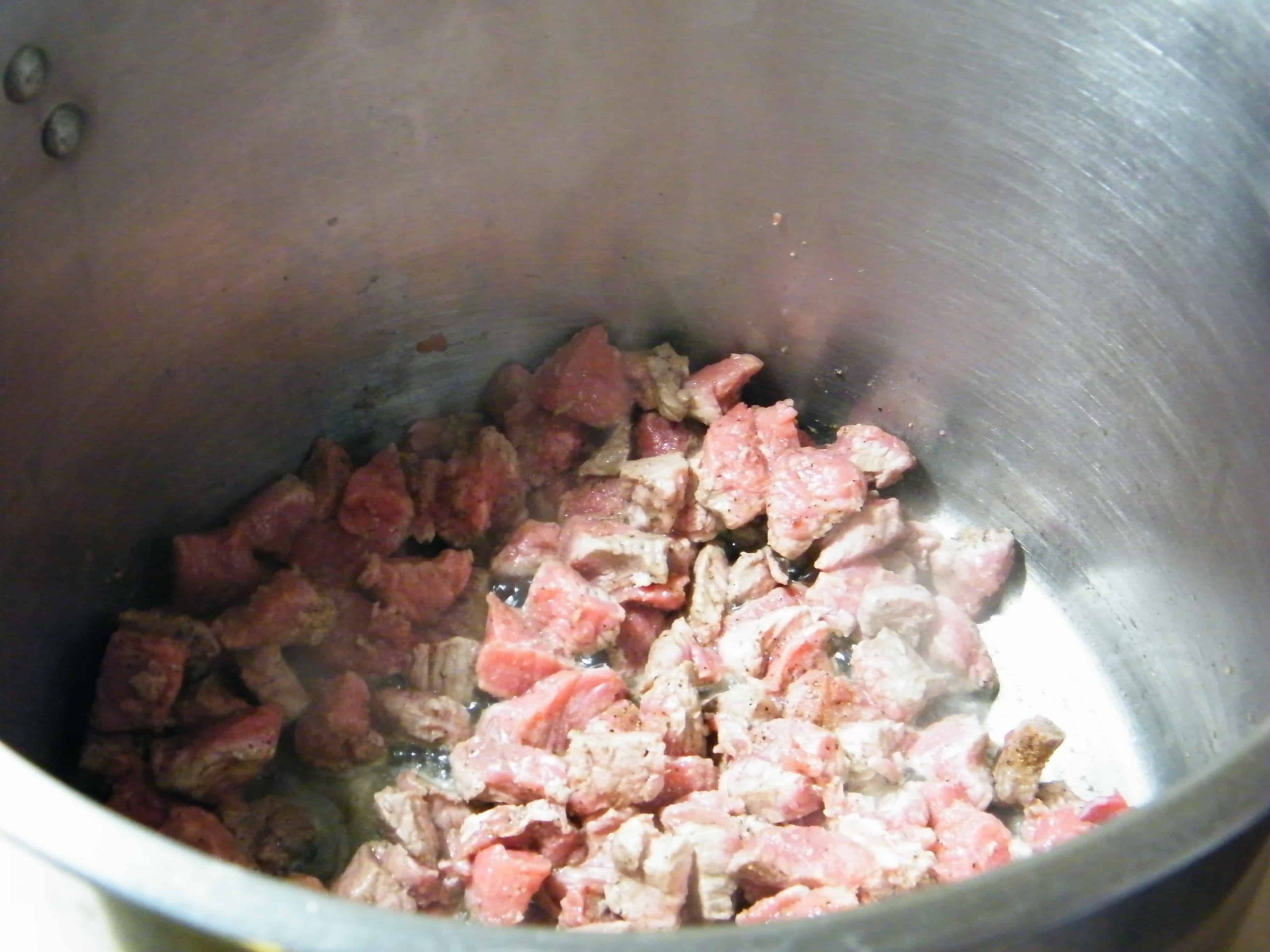
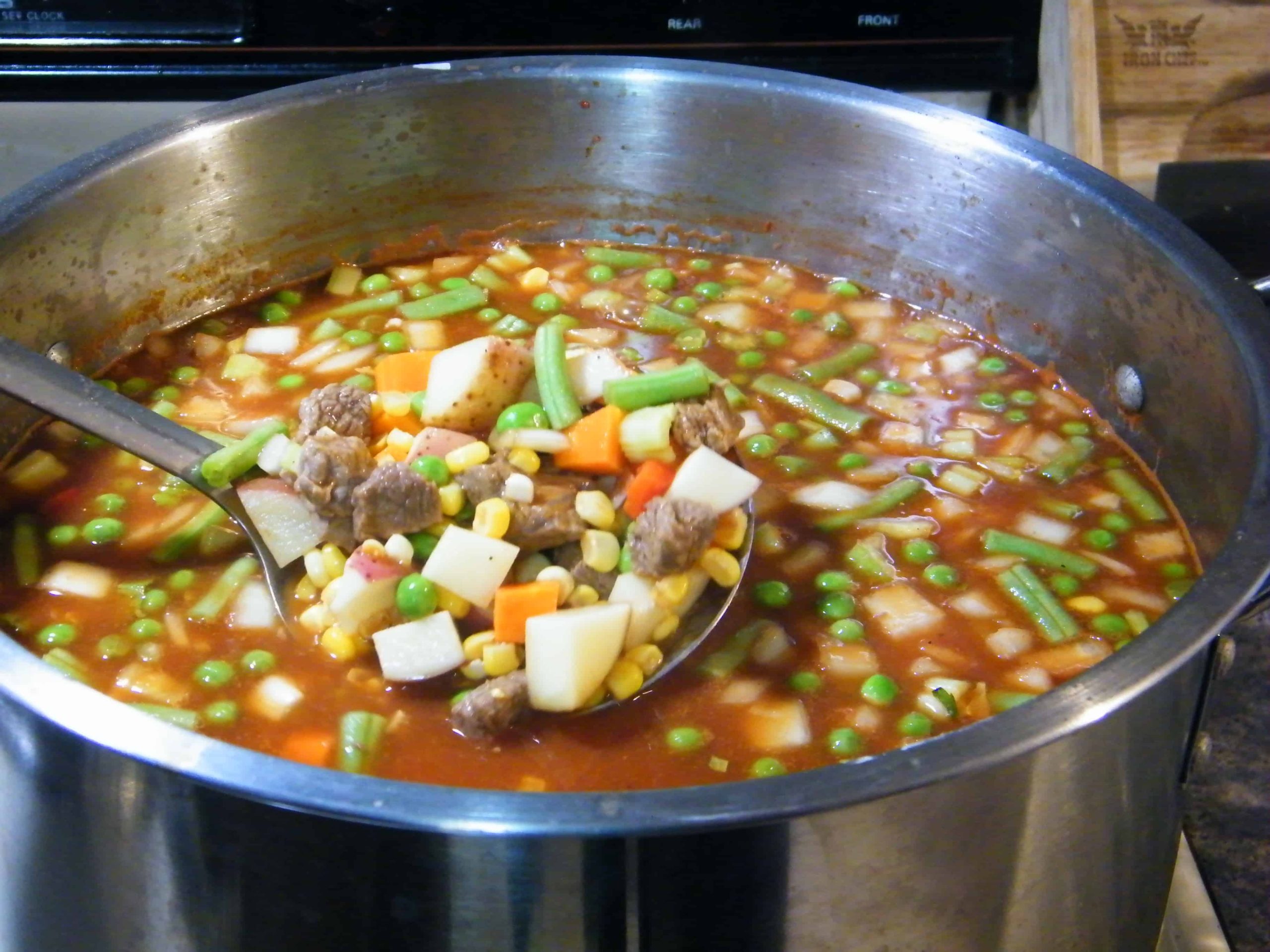
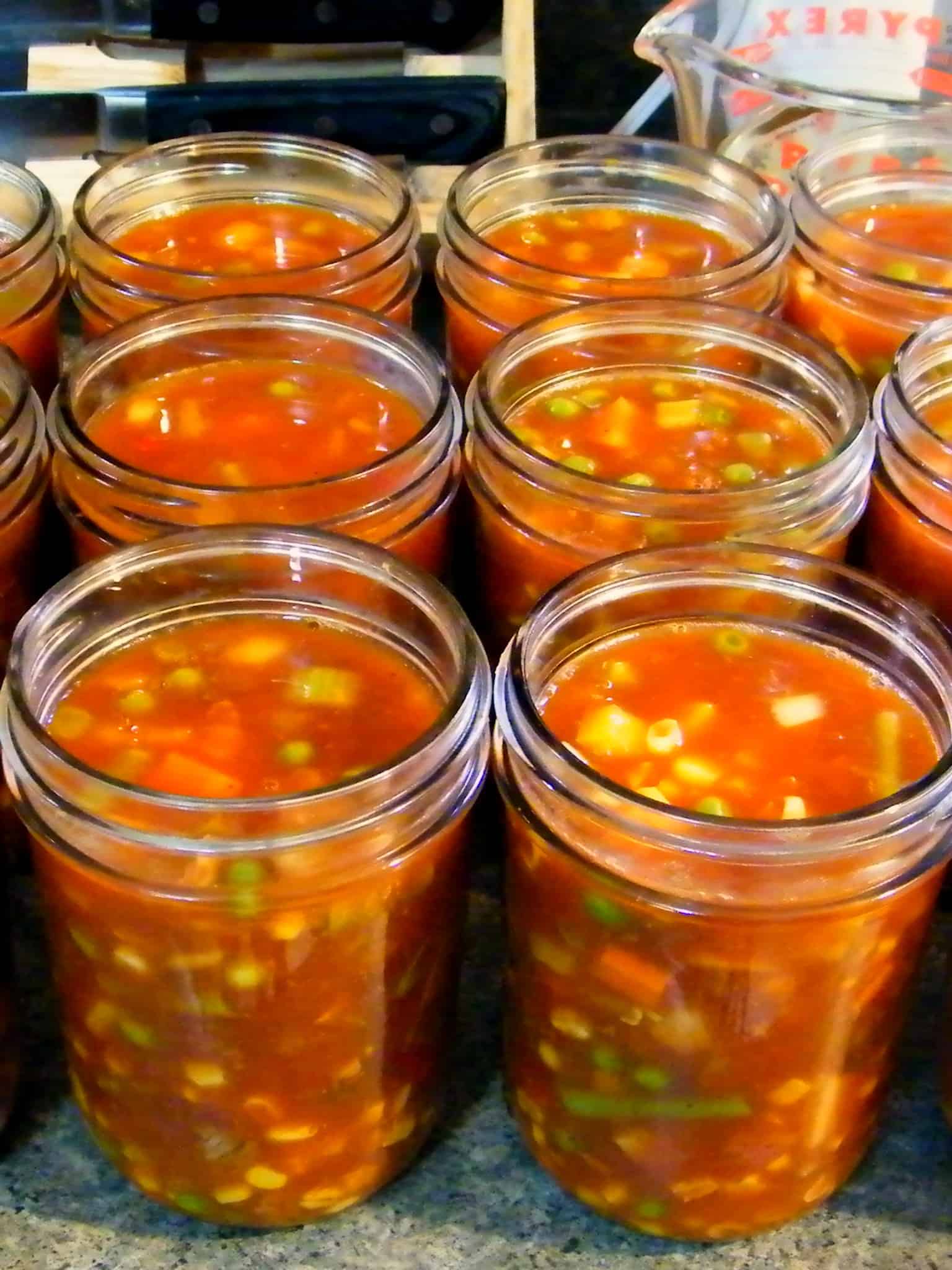

Why cant I just place my already sanitized jars in a big pan of the hottest tap water? Wouldn’t that bring it to a good temperature to carry the soup and be pressurized?
Just washing jars in hot, soapy water works. The heat from the pressure canner will sterilize the jars.
Is there any reason that this soup needs to be cooked at all before canning? I would think pressure canning for meat times would easily cook thus.
I just raw pack mine. Some folks like to taste it before canning, but I figure I can season, if needed, when I open a jar.
Why water bath then pressure cook. 2 different methods of canning. I think your instructions need editing!
I was about to ask the same
I believe the water bath part is to keeps the jars warm prior to filling and pressure canning.
Water bath it and then pressure can it? Doesn’t make sense to me.
No, she is saying to water bath the empty JARS prior to putting the soup into it, then you need to pressure can the jars with the soup in them.
oh why not just grab them from the dishwasher all clean and got
The food, jars and canner need to be the same temperature unless you’re doing raw pack.
beginner here, so this may be a silly question. how long will this canned soup last on the shelf? thank you
Indefinitely.
How tight do the lids have to be before canning? I have had beats that turned white, kaleidoscope carrots turn yellow in the canning process and part of the liquid was sucked out. I went back to water canning.
Lids should be finger tight only. You definitely don’t want to overtighten. It could be that you aren’t leaving enough headspace inside your jars. There should be a 1″ headspace to the jars. This is pretty easily estimated to be at the lower edge of where the rings screw on. It’s easiest to estimate on regular mouth pints because it is the point where the jar narrows for the lid and ring. Also make sure that you have the correct level of water recommended by your canner manufacturer. The jars and the water in the canner should both be hot. Some of these things could have caused your siphoning problem.
Hi, Ed! Pam is right! The screw band should be tightened just to fingertip tight. It is important not to use force or to use jar tighteners when applying two-piece lids. During processing, the air is forced out of the jar. So, if the screw band is too tight, air cannot escape. If you have further questions, feel free to ask them here!
Thanks a lot for reading!
What exactly does fingertip tight mean? I’ve never understood this. And we can all the time.
Fingertip tight means turn the ring just enough so that the ring or lid no longer turns feely. Do not overturn or make it too tight as it will inhibit air from escaping.
If your beets turn white, you have cut them too close to the stem. They are bleeding out.
Lids and rings go on “finger tight”. You don’t want to lock them down too tight or they won’t be able to release the air inside. You can control the liquid loss from the jars by reducing the heat. Use just enough heat to keep the pressure you need. Hope that helps.
How much water do u put in the canner
read the instructions to your canner….Most start with 2-3 qts of water… mine is 23qt and takes 2 qts water… soup process is 90 mins for qts. If doing a longer time make it a total of 3 qts to avoid possibility of loosing all your water from the canner
is there a printer friendly recipe link for this
Thank you for this info. Been wondering.
3 quarts of hot water according to my Presto Pressure canner instructions
2 to 3 inches of water
Enough so that the canner don’t run dry.
Can you use frozen vegetables?
I freeze mine and I is great. Don take as long. I really like better. I don’t put my potato s in till I am ready to eat it
How much tomato juice did you use? Beef broth?
yes
Yep!
I don’t have a pressure canner. Can I can using my large pot of boiling water? Same as I do for vegetables?
No. It is not safe. Only things that can be canned without pressure are things that have vinegar in them, have added sugar (a lot) or tomato based foods (that are primarily tomatoes) due ti acid in tomatoes.
Can I put macaroni in this vegetable soup. If so do I put it in cooked or uncooked?
Thanks
Some pastas turn to mush under pressure.
You should not be canning vegetables with the water bath method. Use the water bath method to seal jars of fruit or jelly’s and jams. Use it to can tomatoes or pickled vegetables. But green beans, beets, potatoes and most other vegetables have too little acid to use a water bath canner. Use a pressure canner. A good pressure canner is a good dual use canner. It can be used as a water bath canner and a pressure canner by regulating the pressure setting and the length of time you process.
Yep!yes! Grandma and the Amish don’t use pressure cookers. Waterbath anything you can for three hours.
Can you can soup with soy based meat products
Why is both water bath and pressure canning required? I feel like the veggies would get super mushy
I think she was reffering the waterbath to clean/sterilize jars before filling. It’s a step I don’t do but jars do need to be hot so the hot soup doesn’t crack the jar.
I agree LA … it was just to sterilize the jars….If your jars are in the PC for 90 mins they will sterilize themselves. Just be sure Chandra the jars are clean to start with an no stuck food particles etc… The time in the canner will take care of the rest.
I clean jars in the dishwasher. Actually, you don’t need to sterilize jars if you fill and pressure can something in the jar. Whether using the water bath method or the pressure canning method, the canning sterilizes the jars and the food at the same time.
Water bath is not the safe method to can Meats and non acidic vegetables. These items must be pressured can to produce a shelf stable product. Please follow a safe tested recipe from a source like National Center for Home Food a preservation .
Because of the risk of boltulism. You must pressure can meats and low acid foods to make sure no one gets sick.
You don’t need to use both a water bath canner and a pressure canner. Use one or the other. I use the dishwasher to clean jars and warm them. That process is why some people use a water bath canner when the actual processing calls for pressure canning. They are using the water bath canner to prepare their jars for filling.
Could you cook meet them raw pack the rest of ingredients? When I precooked the soup last year all veggies were way to soft.
I had to reread twice to understand you meant to clean jars…water bath. It was confusing, but know any meat in recipe is always pressure canned. Thank you for recipes. I’m excited to try them. Very helpful site.
yes that is how i do soups just heat the broth and v8 pour over veggies and meat pressure can i do mine in quarts 90 mins
Could u just cook the soup for an hour and a half then put in jars without using the canner
Absolutely not. The pressure canning is what prevents botulism from forming in the food. Water bath, nor cooking, can reach high enough temp to prevent botulism. The only water bath canning you can do is high acidic foods such as fruit or tomatoes. Please practice all safety precautions to prevent illness or death of yourself and family.
Hi, Donna. You could do that but you should eat the soup right away, say that night or in the next couple of days. If you want to can it, you need to process it per the directions for your altitude, etc. in order for it to be safe.
That does not preserve the food for shelf life.
Can you use the old woodpecker method?if so how long should I cook the jars
OK, Patti. I’m 72 and was raised in the “old” canning methods. Never heard of the woodpecker. We used to tap the lids to see if they rang clear or thudded to tell if they had sealed. Enlighten me. Thanks.
I didn’t think vegetable soup once completely cooked would still require over an hour of pressure canning. I made 10 quarts and lost them! They all sealed then after a couple of days they started to ping open! Heartbreaking! Help
Times for pressure canning are to kill the microorganisms that cause botulism, not times for cooking the food. You have!!!!! to follow the correct guidelines. If you do not have one, I suggest you get a Ball BlueBook canning book.
The meat needs to cook for 1 hour 30 minutes. You cook it for the ingredient that requires the longest time. Without the meat, it would take less time and that would depend in what vegetables that you use.
Maybe you didn’t leave enough head space–space for your soup to expand during processing. I heartily agree with (Patricia G Lemon) getting the Ball Blue Book. There’s a chart that tells you how to adjust your processing time and pressure for your altitude. Most canning recipes are written for 1,000 ft. above sea level. Not workable for MT. I have to process at 15 psi (weighted gauge) for 10 more minutes than the recipe says. I’m at 5,000 ft. above sea level.
Diane, as a post script to my other comment, don’t despair! Keep on. I was raised water bathing, canning, jellying, jamming, pickling, freezing. You can do this and you, and everyone you share with, will be grateful and you, will feel productive and fulfilled!
Why is pressure canning necessary? My mom used water bath canning for vegetables like three hours of boiling. None of us got sick
I was wondering this as well I wb everything, stew, soup, veggies, can meat I follow the wb chart with times and have never had a problem
Hi. I have never used both a water bath canning process and a pressure cooker process for one item. Do you have to use both processes?
Any time canning meat it should be pressure canned … even if just beef or chicken broth
Did you overfill the jars?
I do not have a pressure cooker tall enough to can quart jars, so for now, I have boiling my canned string beans in water bath. How long do I have process my string beans in a water bath? They will surely be eaten within 6 months.
Also, I am going to can vegetable soup using garden vegetables and frozen. No meat will be added to this. I am going to cook all my vegetables before putting it into quart jars. How long do I need to process this?
One final say, I do put a teaspoon of Kosher Salt before processing.
Thanks,
Green beans are low acid they need to be pressure canned
you MUST use pressure canners for ALL low acidic canning and you MUST process for the length of time and under the correct pressure.
I purchased a Presto Digital Processor this year and love it. I do NOT have to stand over it while it is “doing the work” canning. I actually put in my last batch of canned food, get it to the “canning” stage and go to bed. IF I get up during the night I’ll do remove the jars and to back to bed. This canner MAKES you do the processing right and for the correct amount of time.
I don’t understand the part where you say make sure you give it a water bath and then pressure can. Do you do a water bath on just the jars or do a water bath on your filled jars of soup and for how long and then put them in the canner and pressure can them?
I think she means to heat up your jars before loading with soup. They need to be clean, but If mine have been through the dishwasher and capped before storing, I usually just load them. The pressure canning will sterilize. Just my opinion.
Thanks so much, I thought that was what she meant but wanted to make sure before hand….I appreciate the answer!
I like to add a can of condensed tomato soup to my vegetable soup. Would it be safe to pressure can?